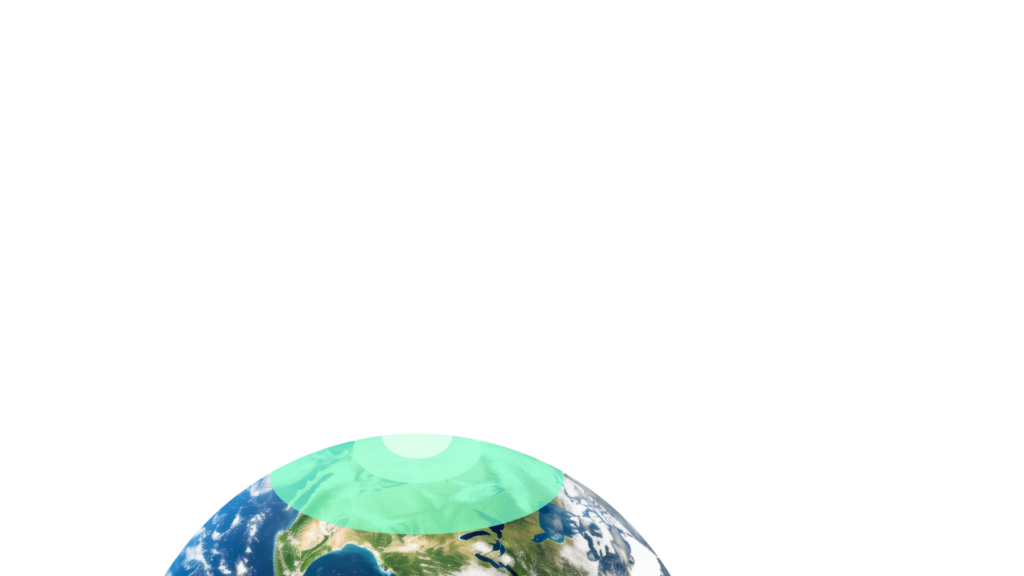Understanding the basics of 5G for satellites: What is 5G NTN?
As the demand for global connectivity reaches new heights, it has become more essential than ever to understand the basics of 5G for satellite communication to build a successful business case. In this article, we’ll dive into the basics of 5G for satellites, particularly focusing on 5G NTN, and why 5G connectivity is an exciting development in the world of satellite communication.
What is 5G NTN?
5G NTN (Non-Terrestrial Network) is an extension of 5G technology that integrates satellite communication into the 5G infrastructure. 5G NTN provides global connectivity to remote and underserved areas. 5G NTN uses a combination of satellite constellations, ground-based infrastructure, and advanced protocols to enable seamless and reliable communication on a global scale.
What type of constellations can be used for 5G NTN?
5G NTN can be used on different types of satellite constellations, including Low Earth Orbit (LEO), Medium Earth Orbit (MEO), and Geostationary Orbit (GEO) satellites. LEO satellites are positioned at lower altitudes, typically around 180 to 2.000 kilometers above the surface of the earth. MEO satellites have an altitude of around 5.000 to 20.000 km and are typically used for navigation systems like GPS, while GEO satellites have an altitude of around 36.000 km.
Most of the focus in NTN deployments is on the use of GEO and LEO satellites. GEO satellites have the advantage of providing terrestrial-like cells, while LEO satellites have the advantage of providing coverage with a lower latency and better link budget due to the shorter distance. Latency is the time it takes for a signal to propagate through the system.
However, since LEO and MEO satellites are moving around the earth at very high speeds (can be as fast as 28.000 km/hour), transmission signals are influenced by the Doppler effect. The Doppler effect causes a shift in the frequency of signals due to relative motion between the satellite and the ground station or user device, and this needs to be compensated for.
Read more about how to compensate the Doppler effect in NGSO satellites in our FAQ

What are some of the challenges of 5G for satellites?
What may be simple to achieve in a terrestrial network can be extremely complicated in a non-terrestrial network. Which is why there are some constraints of achieving 5G connectivity over satellite. Devices are expected to require line of sight to the satellites to close the link budget. This can be challenging in a LEO constellation as LEO satellites are moving in relation to earth, resulting in short windows of visibility. Because of this, it will require larger constellations of LEO satellites to provide discontinuous global coverage and on the UE (user equipment) side, devices will need to continue reselecting different satellites to avoid connection gaps.
For geostationary satellites, only a few are required to provide global coverage as these satellites are static and cover a much larger part of the earth. For GEO satellites, the challenge is however the prolonged delay along with the path-loss due to the distance to earth.
How to overcome the challenges of 5G NTN?
The 5G NTN software protocols play a vital role in facilitating seamless communication between ground-based infrastructure, user devices, and the satellite network. Standardization efforts by 3GPP are instrumental in addressing challenges related to these protocols.
These standards, covering aspects such as network architecture and interfaces, provide a universal framework and ensure a cohesive approach to challenges like latency, signal quality, and scalability. By following the 3GPP standards, industry stakeholders can benefit from a shared understanding of protocols, as well as higher compatibility and a more efficient integration. This not only helps create strong solutions but also encourages teamwork, allowing everyone to work together to solve the technical challenges of 5G NTN satellite connectivity. It also lays the foundation for adopting new technologies and improvements, fostering creativity while ensuring a consistent and standardized way of communication across the global telecommunications system.
As this technology continues to evolve, we can expect even more innovative applications and improvements in satellite-based 5G NTN, further enhancing our ability to stay connected, regardless of our location on the planet. The future of connectivity, in which 5G for satellites is a crucial part, is indeed an exciting one.

Raphaela Oliveira Teixeira, Sales Executive at Gatehouse Satcom, is helping businesses realize their 5G NTN strategies. Gatehouse Satcom is a full member of 3GPP and actively contributing to the standardization through extensive knowledge of satellite communication.
Want to know more about 5G NTN? Please contact Raphaela Oliveira Teixeira at [email protected] or connect on LinkedIn.

Other news
Let’s get in touch
Get in touch with us to learn how embedded satellite communications software can enable your roadmap to compete in the rapidly evolving market for connectivity. You can contact us with any specific inquiries or to set up a meeting.
We look forward to hearing from you and to discuss your satellite communications software needs.
